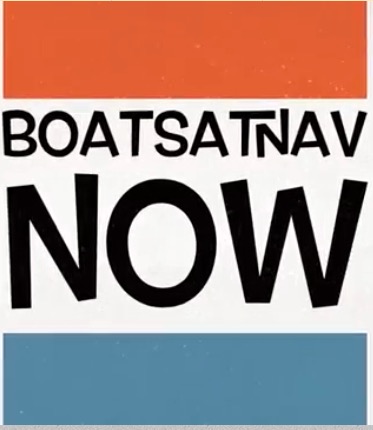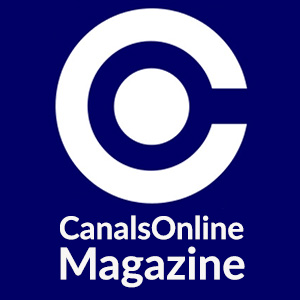Notes from the 2019 CRT National Users’ Forum held in Birmingham on the 3rd April.
This is the third time that I have attended this annual meeting to represent RCTA and it has been fascinating to observe the change in the organisation over that time. I will try to give a flavour of the meeting although this is quite difficult because, like at most CRT meetings, you are swamped by information. I did wonder at one point if these meetings have a genuine value as it is impossible to assimilate the information that is thrown at you but perhaps that is not the point. I suspect everything they tell you is, or will be available, in their published reports and on their web site. What I think the meetings can do is offer an opportunity to get a sense of the direction of travel and to even pick up an impression of, dare I say it, the wellbeing of the organisation. It is also important to listen out for issues which might concern RCTA directly.
The meeting opened with a welcome and introduction by the Chief Operating Officer, Julie Sharman – an intense burst of facts and figures covering the performance of CRT. It would be fair to say that not all the key performance indicators are going in the right direction. Important targets have not been met but the margin of error is not huge. Even Brexit is impacting CRT, delaying investment decisions and slowing investment income. This is the first time in the meetings I have attended that the CRT story has not been all good news. Does this mean that things are getting harder? The most upbeat part of her presentation covered restoration works, third party funding of towpath improvements, and CRT open days – there was a good story to tell here. The big regional and staff restructuring (that has seriously delayed RCTA’s own discussions with CRT since the autumn) has clearly been disruptive for staff but it is likely to be finalised by the end of this month. Looking ahead, her main bullet point was – hold costs and improve income
Next came Jon Horsfall, head of Customer Service Support, a new team which now includes business boating and roving traders. It would be hard to dislike these CRT senior managers. All seem to be engaging and personable. Lots of positive strokes here for boaters and canal users. My shortened version of the mission of the new customer service team would be that it aims to provide support for the new regional teams and their customers so that CRT can achieve its ambitions as a waterways charity. I sensed that this will be the team which will maintain a national overview on the work of the regions. Buzz phrases included, the door is open, we are listening, we want to talk, keep doing what you are doing, maintain your enthusiasm and motivation, keep questioning, talk to us as early as possible and don’t let things fester, if not sure ask.
The next presentation was about the role of elected boating representatives on the Trust Council. Andy Tidy and Nigel Hamilton, both Business Boating Representatives, gave an excellent presentation on an area that has always been a mystery to me. What I discovered was that these people are important! They oversee good governance and the trustees are accountable to them. There are representatives from all the key users and stake holders in the Trust. Their role is to question and test, to be sceptical, to ask for explanations, to find answers, to cut through layers of management when things get bogged down, to suggest solutions, to identify new opportunities. The recently published Boaters Report is one of their initiatives to ensure boaters feel valued. They are currently working on refreshing the Waterways Code to reflect the changing and diverse range of users. At the end of their presentation my conclusion was that RCTA need to get to know our business boating representatives and we should be talking to them more regularly.
The section called ‘Boating Priorities’ was delivered by Matthew Symonds Boating Engagement manager. Last year this manager talked about developing the London Mooring Strategy although, significantly to my mind, it wasn’t mentioned this year. There were no surprises here and it covered the headings most boaters are familiar with. It essentially gave an upbeat report on the areas of concern, the difficulties and the opportunities for boaters. All good interesting stuff but the fact that my notes were pretty sparse during this presentation suggests nothing was of immediate concern for RCTA. That said, we do need to keep the missing London Mooring Strategy under review.
Next up Fisheries and Angling. John Ellis National Fisheries & Angling Manager was at pains to stress how alike the boating community and fishing communities were. Ranging from our shared history, how similar our economic value to the nation was, how are needs are similar, how boaters are important for keeping the weed down and aerating the water; it would seem from his presentation that we should be the best of buddies. Some hard questions from the audience took the gloss off his argument slightly but he was undaunted. It was all about education, education, education. Things will get better he says!
The message from Richard Wakelin, the head of Asset Strategy and Engineering Services in his presentation on ‘Managing our Assets, was that to improve things, CRT needed a better understanding of their infrastructure. By doing things better they would spend money more wisely. To this end he had introduced new measures which will result in improved customer service, new key performance indicators, new operating systems and compliance with new standards. This had led to a change from a rolling plan to 3 year and 10 year plans with the eventual goal of a 20 year strategic plan. At the end of the presentation you did have a sense that some clever people were getting a grip of the situation but, if you are regularly chugging up and down the canals, you couldn’t help but worry that these plans might sit on a hard drive in a computer at HQ and might not lead to the improvements the waterway so clearly need. The future will tell.
‘Winter Works Review And Year Ahead’ was delivered by Dean Davies, Head of Direct Services. This man is either the hero who keeps the old system from collapsing or the person you blame when you are stuck at a closure somewhere you don’t want to be for weeks at a time. This guy has to be quick on his feet – a sudden emergency here, another there, winter works moved to the summer when the canal is closed due to water restrictions. There was no rest for his team. It is clear that boaters are important to this manager. His team will try hard to mitigate closures so people are not too badly affected. They say they hate it when things don’t go to plan. These are the people who are working hard on the nuts and bolts that keep the system functioning and it’s probably correct to think of them as heroes!
HS2 Update by Peter Walker Head of asset management. Seemingly an unchanged presentation from last year but this is not the case. Things are really happening as I found out myself. Stomping down from New Street Station I found the top end of Fazely Street had disappeared under a HS2 building site. Which way to go? Luckily I guessed right and with only a few minutes to spare found my way to the meeting. His team are quietly making sure HS2 doesn’t destroy the canal system as it bludgeons its way North. Very reassuring.
What was my overall impression from the meeting this year? If last year was about a fresh mission, new image, new branding, new users, new regions, new internal management structures (my goodness, was all this in one year?) this year was about ‘understanding’. Finding out, identifying needs, measuring, listening to customers, creating new key performance indicators, identifying priorities, establishing strategies and plans – the objective being that by understanding things better CRT can improve performance and customer service and spend more wisely.
Andrew Mills
RCTA/CRT liaison volunteer








































































 IWA Canalway Cavalcade 2025
IWA Canalway Cavalcade 2025 RCTA Startops May Day BH Floating Market at Marsworth
RCTA Startops May Day BH Floating Market at Marsworth Norbury Canal Festival 2025
Norbury Canal Festival 2025 RCTA Burton on Trent May Day BH Floating Market
RCTA Burton on Trent May Day BH Floating Market RCTA Willington Floating Market
RCTA Willington Floating Market RCTA Berkhamsted Floating Market
RCTA Berkhamsted Floating Market Moira Canal Festival
Moira Canal Festival The Batchworth Rally
The Batchworth Rally RCTA Boxmoor May Spring BH Floating Market
RCTA Boxmoor May Spring BH Floating Market RCTA Fazeley Junction BH Floating Market.
RCTA Fazeley Junction BH Floating Market.



Comments are closed.